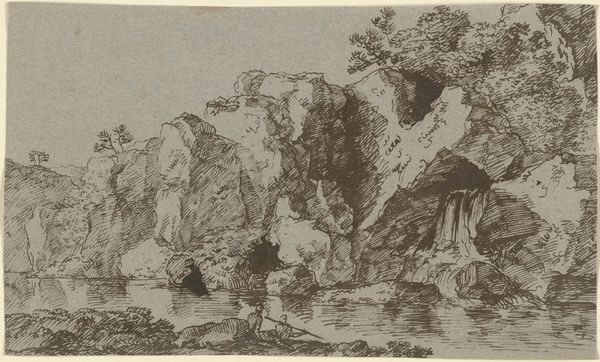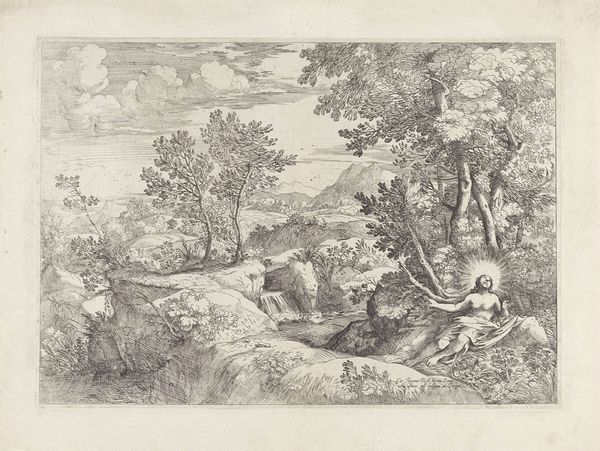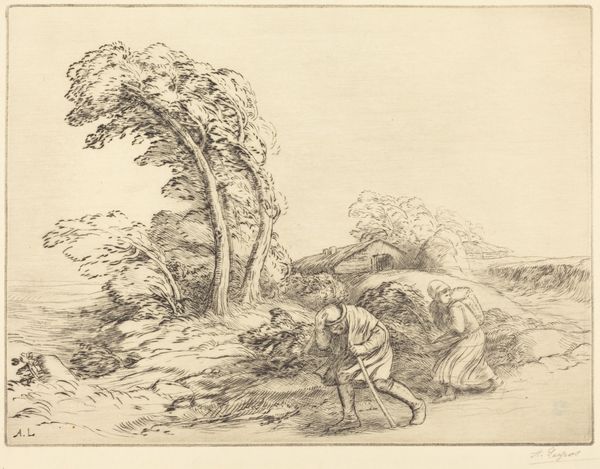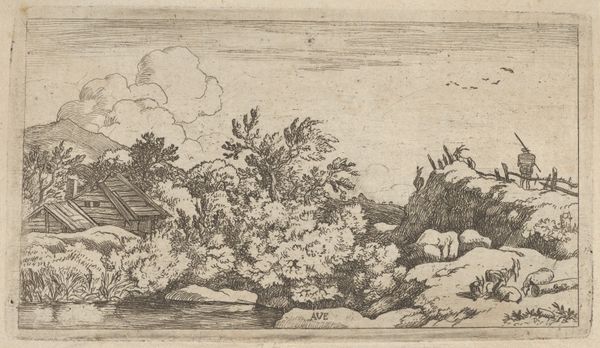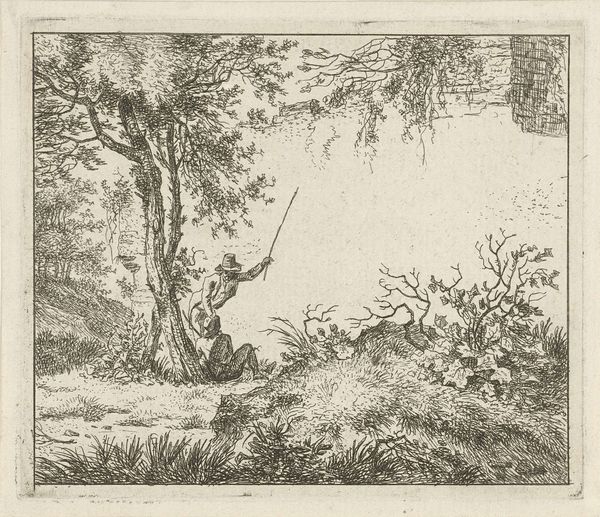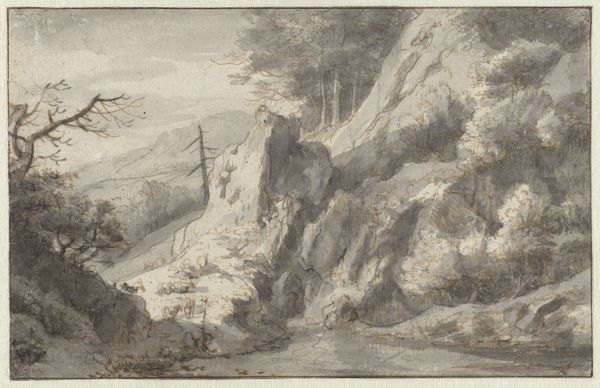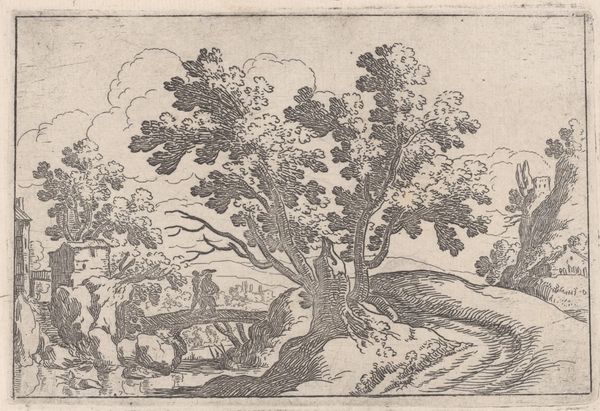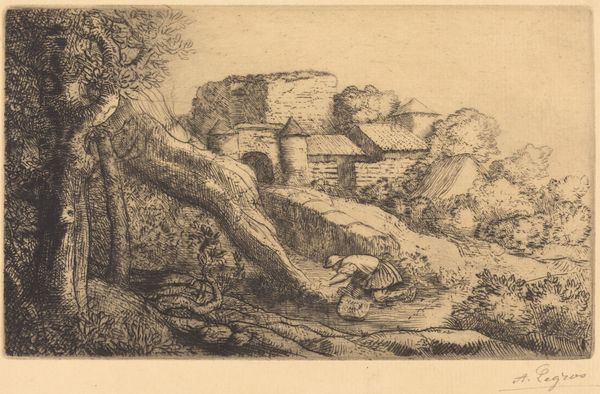
drawing, paper, ink
#
drawing
#
dutch-golden-age
#
landscape
#
paper
#
ink
#
genre-painting
Dimensions: height 123 mm, width 189 mm
Copyright: Rijks Museum: Open Domain
Curator: Welcome. We're standing before "Road Between Trees at a Farm" by Pieter de Molijn, created between 1625 and 1629. It's a drawing done with pen and ink on paper and part of the Rijksmuseum collection. Editor: It’s quite moody, isn't it? That blue paper creates an almost twilight feel. The line work is incredibly detailed but also very free. Curator: Exactly! De Molijn was a master of rendering the Dutch landscape. Consider the context of its creation. This was during the Dutch Golden Age, when there was burgeoning civic wealth and patronage of genre scenes was extremely common. The focus on humble, everyday subjects was novel. Editor: It’s interesting how the texture of the ink mimics the natural forms: the way the dense lines form shadows among the leaves, almost mimicking the process by which shadows and volume appear on trees. Do you think the blue paper had to be specially sourced or treated in any way? Curator: Certainly, the materiality would be very relevant here. During this time, the paper mills were experiencing innovations, so we can understand more about cultural exchange and consumption by studying the paper itself. This blue preparation seems relatively standard for drawings during this period, offering depth and contrast to the darker ink. Editor: And the solitary figure in the foreground reinforces a connection to working-class existence in nature, the quiet solitude, and the importance of the agrarian class as subjects to depict for the burgoise class. Curator: Absolutely. While the landscape itself seems idyllic, it's also important to remember the societal realities it may have represented. Land ownership, agricultural labor, and rural life— these were critical parts of the socio-political fabric of the Netherlands at the time. And patronage often carried underlying political tones. Editor: So the choice of this genre might reveal an interest in projecting a particular national identity, celebrating the connection between the people and the land, even within domestic settings. It also reflects, dare I say, the commodification of “simple life”. Curator: Indeed. And looking at how these themes played out through patronage, market demand, and even artist training, one can see a rich intersection between artistic expression and its broader reception. Editor: Looking at the texture of the material and composition, there is a strong sense of both familiarity and discovery, both then and now.
Comments
No comments
Be the first to comment and join the conversation on the ultimate creative platform.
